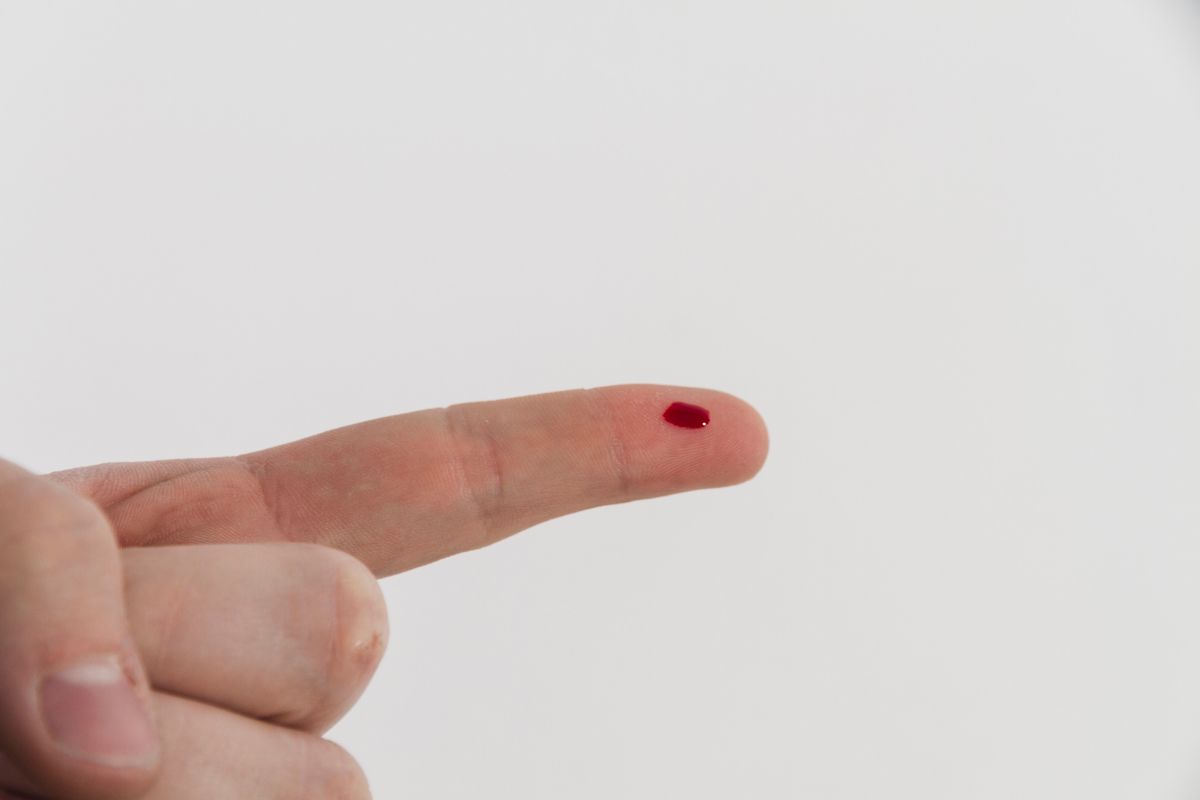Recent statistics indicate that prescribing practices are changing despite its longstanding popularity. According to the latest USA-based stats, warfarin prescriptions are declining. NOACs are non-vitamin K antagonist oral anticoagulants, a new class of anticoagulants.
NOACs have revolutionized anticoagulant therapy, giving healthcare professionals and patients new options. Compared to warfarin, NOACs have distinct mechanisms of action and potentially fewer monitoring requirements.
Staying on top of anticoagulant therapies as the medical landscape changes is essential. NEW anticoagulation options are available to US patients thanks to NOACs. 1. Describe the potential side effects and contraindications of warfarin and NOACs. In this way, readers can gain a better understanding of each anticoagulant’s risks and benefits.
In this blog
ToggleWhat Is Warfarin?
Warfarin is an anticoagulant medication that prevents blood clotting in certain medical conditions. Many patients are prescribed it if they’re at risk of strokes, deep vein thromboses (DVT), pulmonary embolisms (PE), and other clot-related issues.
How Does Warfarin Work?
Warfarin inhibits blood clotting by interfering with normal blood clotting. Its mechanism of action involves blocking vitamin K-dependent clotting factor synthesis in the liver. These clotting factors (II, VII, IX, and X) are essential for blood clots.
Vitamin K is crucial in activating these clotting factors, and warfarin inhibits the enzyme responsible for vitamin K recycling. As a result, the body’s ability to produce functional clotting characteristics is reduced, leading to slower clot formation.
Alternatives to Warfarin: Non-Vitamin K Antagonist Oral Anticoagulants (NOAC)
In the USA, an emerging class of anticoagulant medications known as Non-Vitamin K Antagonist Oral Anticoagulants (NOACs) offers a distinct approach to warfarin.
These NOACs inhibit specific enzymes for producing fibrin, a crucial protein in blood clotting. By interfering with fibrin production, these alternative drugs help prevent dangerous blood clots.
Latest USA-based statistics reveal that NOACs have gained popularity as a viable option for anticoagulation therapy, offering patients an alternative to warfarin. As with any medication, healthcare professionals must monitor their use and adjust dosages based on individual needs to ensure safe and effective treatment. Always seek advice from a healthcare provider to determine the most suitable anticoagulant therapy for your condition.
Currently 5, NOACs are licensed in the USA:
- Dabigatran (Pradaxa)
- Rivaroxaban (Xarelto)
- Apixaban (Eliquis)
- Edoxaban (Savaysa or Lixiana)
- Betrixaban (Bevyxxa)
Dabigatran (Pradaxa): Alternative to Warfarin
Dabigatran, the pioneering ‘novel’ anticoagulant, offers a compelling alternative to warfarin for specific medical conditions. It is approved in the USA for preventing blood clot formation in patients undergoing total hip or knee replacement surgery, as they are at increased risk of deep vein thrombosis (DVT).
Moreover, Dabigatran is licensed for stroke prevention in patients with nonvalvular atrial fibrillation with additional risk factors such as hypertension, diabetes, heart failure, previous stroke, or those aged 75 years and above.
The scope of Dabigatran extends to treating DVT and pulmonary embolism (PE) and preventing recurrent DVT and PE.
Pradaxa comes in three capsule strengths:
- 75mg
- 110mg
- 150mg
Taking Dabigatran is straightforward, and the dose may vary based on the condition and timing of treatment. It can be taken with or without food, but the capsules should not be opened to avoid an increased risk of bleeding.
As with any medication, Dabigatran use comes with potential side effects. Up to 1 in 10 patients may experience side effects related to bleeding, such as nosebleeds bleeding from the genitals, rectum, or gums. Other common side effects include indigestion, nausea, stomach ache, and loose bowel movements.
It’s essential to be aware that severe bleeding, although rare, can occur with Dabigatran and may have serious consequences. Reading the patient information leaflet (PIL) to understand potential side effects and recognize any severe issues is crucial. For more information, please refer to the PIL included with the medication.
Rivaroxaban (Xarelto): Alternative to Warfarin
Rivaroxaban is an anticoagulant used in the USA to prevent venous thromboembolism, such as deep vein thrombosis (DVT), in patients who have undergone hip or knee replacement surgery.
Furthermore, rivaroxaban is approved for treating DVT and pulmonary embolism (PE) and preventing these conditions from recurring. The dosage and duration of medicine depend on the specific condition being addressed or prevented.
The typical dose of rivaroxaban can vary from 10mg to 20mg, taken once or twice daily. It’s important to follow your prescriber’s instructions for proper dosing.
Rivaroxaban should be taken with or after food. Xarelto tablets can be crushed and mixed with water for patients with swallowing difficulties.
In July 2019, The Medicines and Healthcare Products Regulatory Agency (MHRA) issued a drug Safety update advising that rivaroxaban 15mg and 20mg (only) should be taken with food, as decreased effectiveness was observed when these tablets were taken on an empty stomach (Gov.UK, 2019).
The most common side effect of rivaroxaban use is bleeding, reported in 1 in 10 patients. This may include nosebleeds, gastrointestinal bleeding (in the stomach), bleeding from gums, heavy menstrual periods, bleeding into the eye, or bleeding under the skin.
Other common side effects may include rash, itchy skin, indigestion, stomachache, constipation, diarrhea, feeling or being sick, weakness, tiredness, a decrease in blood pressure, fever, and changes in liver or kidney function.
In rare cases, rivaroxaban may cause severe skin reactions. For more details about serious, rare side effects and how to recognize them, refer to the product information leaflet, which can be found at the end of this post.
Apixaban (Eliquis): Alternative to Warfarin
Apixaban (Eliquis) is a medication used as an alternative to warfarin for various conditions related to blood clot prevention and treatment. It is prescribed for the following purposes in the USA:
- Prevention of blood clot formation in patients who have undergone hip or knee replacement surgery.
- Prevent blood clot formation in the heart due to irregular heartbeat, specifically atrial fibrillation.
- Treatment of blood clots associated with deep vein thrombosis (DVT) and pulmonary embolism (PE) and prevention of their re-occurrence.
Apixaban is typically taken twice a day, and the recommended dosage may vary depending on the condition being treated and the timing of administration. The initial dose may differ from the maintenance (usual) quantity. Apixaban (Eliquis) is available in 2.5mg and 5mg tablets.
You can take Apixaban with or without food simultaneously every day.
Like other anticoagulants, Apixaban carries a risk of bleeding, which, although rare, can be life-threatening, mainly if it occurs in the brain.
The likelihood of experiencing common side effects depends on the treated condition. Some of the typical side effects associated with Apixaban use include:
- Hemorrhage (bleeding from the nose, gums, urine, stomach, mouth, or vagina)
- Bruising and swelling
- Contusion (a bruise)
- Epistaxis (nosebleeds)
- Hematoma (bruising)
- Anemia (which can cause tiredness)
- Nausea
- Skin rash
Refer to the product information leaflet for more detailed information on side effects and their frequency (eMC, 2019). If you’d like a comparison between Apixaban and Warfarin, I Will discuss it in greater detail in another post.
Edoxaban (Lixiana): Alternative to Warfarin
Edoxaban is an effective alternative to warfarin for preventing strokes in patients with atrial fibrillation and blood clot formation in individuals with additional risk factors such as hypertension, diabetes, heart failure, previous stroke, or those aged 75 years or older.
Moreover, edoxaban is approved for treating and preventing blood clots in the leg veins (DVT) and the blood vessels in the lungs (PE).
Edoxaban is available in three tablet strengths:
- 15mg tablets
- 30mg tablets
- 60mg tablets
The dosage and treatment duration depend on the specific condition being treated. Edoxaban can be taken with or without food. Always follow your doctor’s instructions regarding the administration of edoxaban.
As with all anticoagulants, edoxaban can cause bleeding, which is exceptionally rare but could be life-threatening. Some common side effects associated with edoxaban include:
- Anemia (leading to tiredness)
- Headaches
- Dizziness
- Nosebleeds
- Gastrointestinal side effects (lower and upper gastrointestinal hemorrhage/bleeding, abdominal pain, oral bleeding, or bleeding of the pharynx, nausea)
- Hepatic disorders, such as an increase in bilirubin
- Skin-related side effects (rashes, itching, bleeding in the soft tissue)
- Vaginal bleeding (in women under 50 years of age)
For more details on side effects, please refer to the product information leaflet at the link at the end of this post.
Advantages of Using Warfarin Alternatives
- Rivaroxaban and Dabigatran, USA-based alternatives to warfarin, begin working within 30 minutes of oral administration (Brighton, 2010).
- Fewer Drug Interactions: Our suggested alternatives have fewer interactions with other medications, reducing the risk of potential complications than warfarin.
- Fewer food interactions: Unlike warfarin, these alternatives show fewer interactions with food, making it easier for patients to follow their prescriptions.
- These drugs are more predictable, providing healthcare professionals with greater confidence.
- These alternatives do not require frequent blood tests for monitoring, unlike warfarin.
- Compared to warfarin, these alternatives are straightforward to dose.
- USA-based alternatives may be less likely to cause severe bleeding compared to warfarin.
Disadvantages of Using Warfarin Alternatives
- USA-based alternatives are significantly more expensive than warfarin, making them inaccessible to some patients.
- In emergencies such as trauma or surgery, some alternatives lack readily available antidotes to reverse their anticoagulant effects. Despite Dabigatran’s treatment, certain NOAC antidote drugs are still in development (Levy et al., 2018).
As of 11 February 2024, the above info is based on USA-based statistics. You should always talk to your doctor about the best anticoagulant treatment for you.
Are Warfarin Alternatives Superior to Warfarin?
When it comes to anticoagulant treatment, warfarin alternatives offer clear advantages. The key factors to consider are the Safety and effectiveness of NOACs compared to warfarin. Below is a concise summary of conclusions from major clinical trials comparing NOAC with warfarin.
How do you switch from Warfarin to Warfarin alternatives?
Switching from warfarin to a NOAC (Novel Oral Anticoagulant) like Apixaban, Dabigatran, Rivaroxaban, or Edoxaban is possible, depending on your circumstances.
Here’s a general guideline for switching from warfarin to a NOAC (based on NICE, 2019):
- Stop Warfarin Treatment.
- Measure INR (International Normalized Ratio) with the ideal target INR being less than 2.
- Initiate NOAC Treatment when INR is below 2.
- If INR is between 2 and 2.5, start NOAC treatment the next day.
- If the INR is above 2.5, delay the start of the new NOAC treatment until the INR drops below 2.
It’s important to note that switching medications should always be done under the guidance and supervision of a healthcare professional. They will consider your medical history and individual needs to ensure a smooth and safe transition to the new anticoagulant treatment.
Also Read
Final Words From AzDrug
The latest advances in anticoagulant medications offer several benefits over warfarin treatment. Clinical trials have shown these new anticoagulants are equally effective and, in some cases, better than warfarin.
If you’re thinking about switching from warfarin to an alternative anticoagulant, talk to your doctor. Having this information will let them choose the best option for them.


